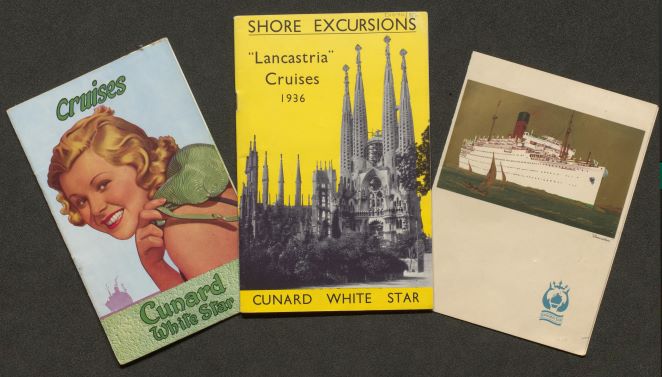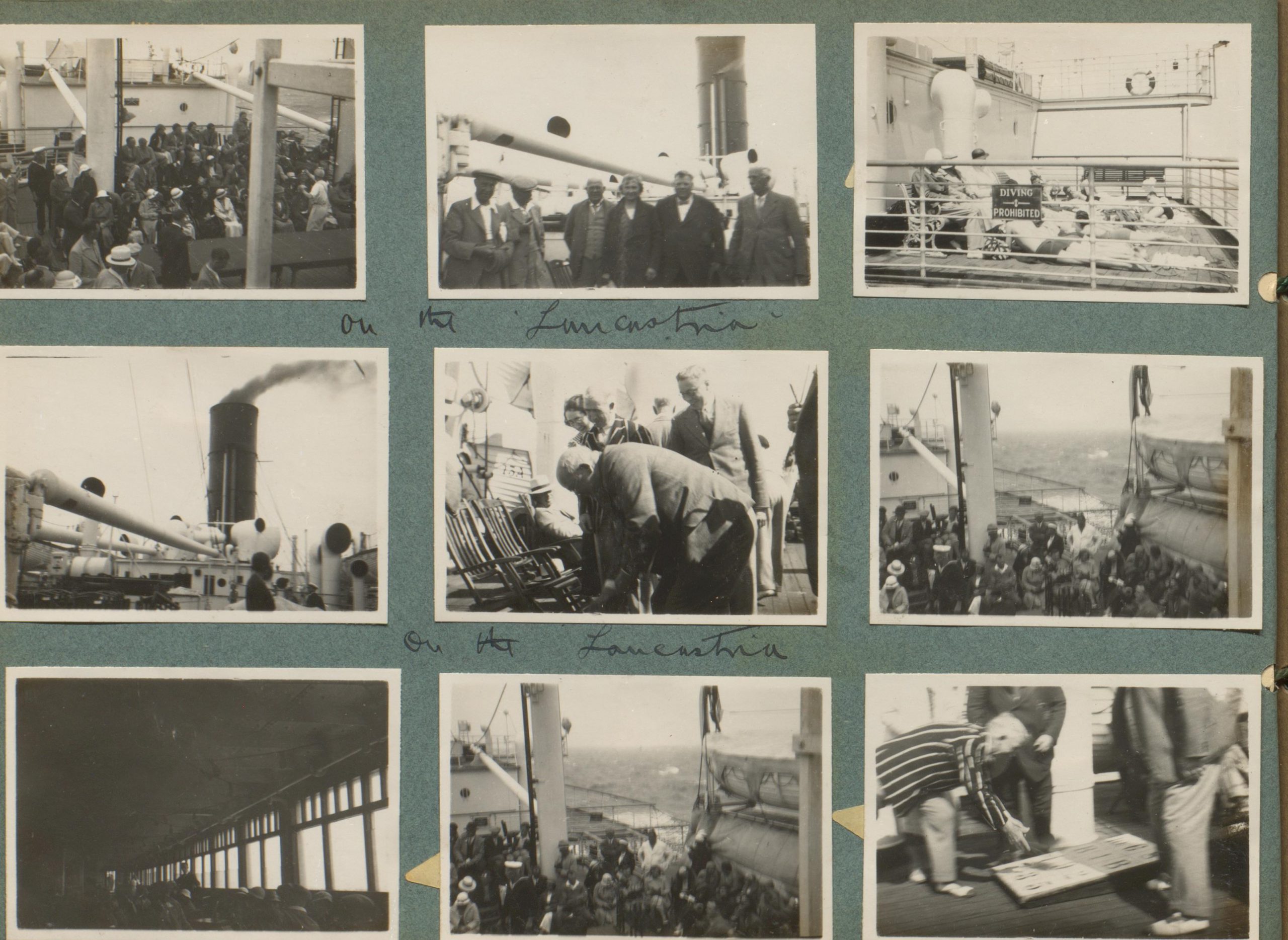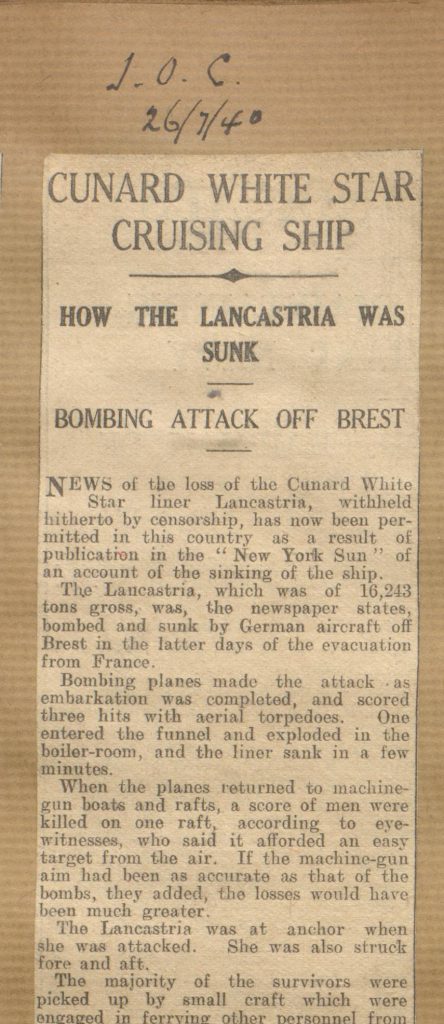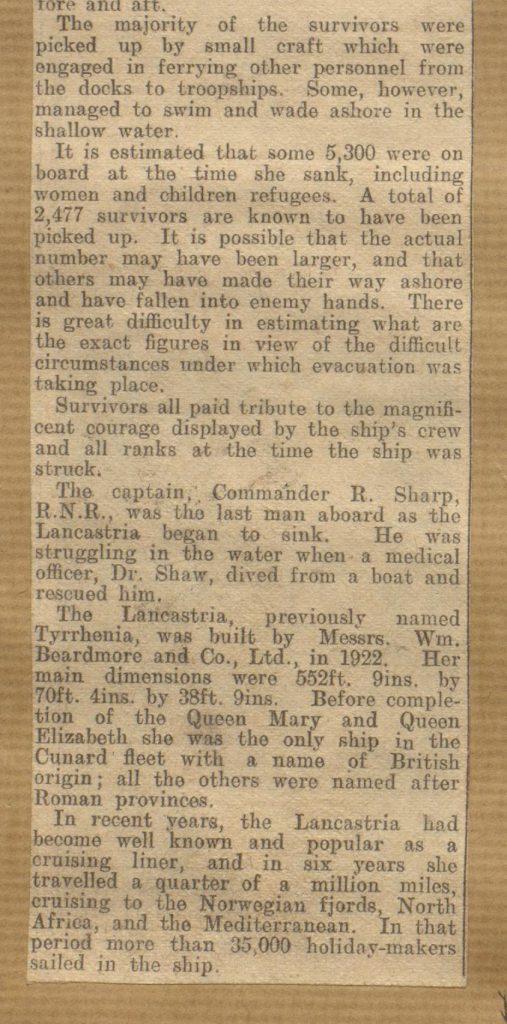Next week marks the 80th anniversary of the sinking of the Lancastria during the Second World War. Although resulting in the largest loss of life in British maritime history, many are unaware of this tragedy.
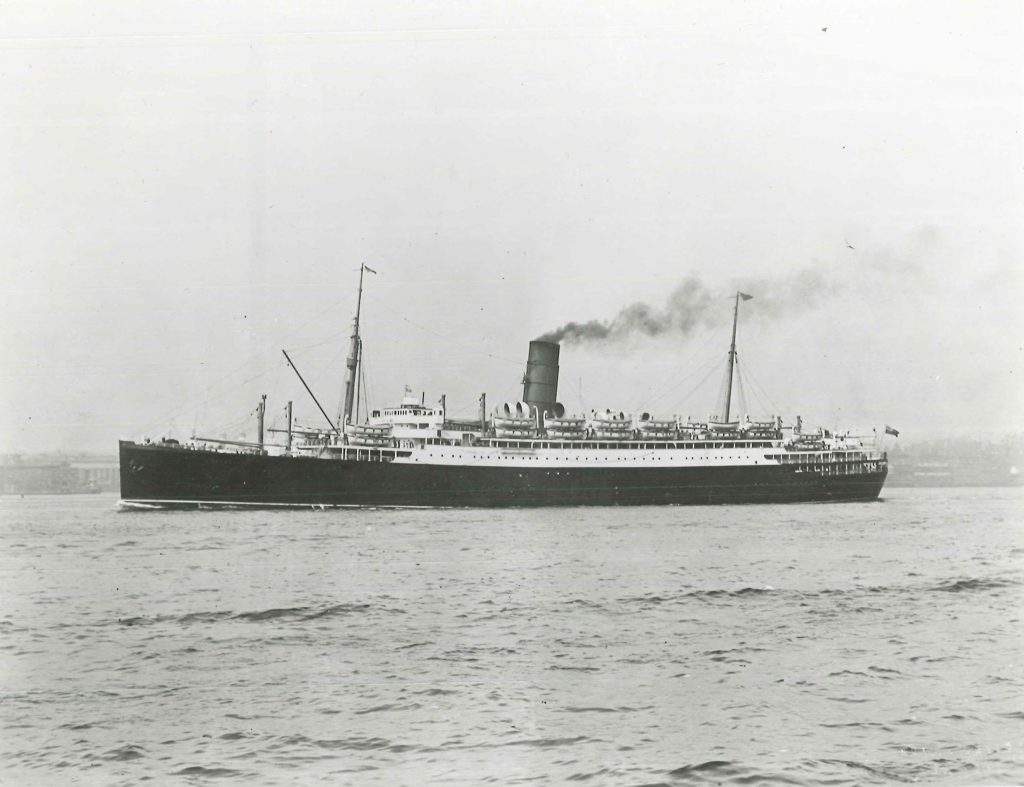
Originally called the Tyrrhenia and belonging to the Anchor Line, the ship made its final transatlantic crossing in 1924 after Cunard made the decision to convert it to suit the cruising role. After the overhaul and redesign of passenger accommodation the opportunity was taken to change the unpopular name, so in 1924 it was renamed Lancastria.
The Lancastria’s maiden voyage was from Liverpool to New York on 22 March 1924, continuing to sail to New York until 1932 when it primarily became a cruise ship until the outbreak of the Second World War. After arriving at Liverpool in April 1940 it was requisitioned as a troopship.
In June 1940, all available troopships were required to assist in the evacuation of British and Allied troops from France in what was known as ‘Operation Aerial’. The Lancastria left Liverpool and headed for St Nazaire where on 17th June at least 5000 troops and refugees including women and children were embarked on board – though many estimates give a much higher number.
That afternoon a fire broke out on board the Lancastria after it was struck by bombs causing the ship to sink rapidly. A response by Staff Purser E. G. Thomas to Cunard’s questionnaire covering War Service is given as follows:
“During the time of sinking, companionways were jammed with troops but there was surprisingly little panic, how many men got away from the vessel cannot be known but the oily water around the scene was dotted with what were probably thousands of black faces.” (D42/PR3/16/51)
E. G. Thomas was picked out of the water four hours later and returned to St. Nazaire where he was transferred to the S.S. Ulster Prince before arriving at Falmouth two days later. He was one of just 2500 people to be saved. The scale of the disaster and its timing alongside other historic events meant that Winston Churchill placed a ‘D-notice’ on its publication in the interests of public morale. However, US newspapers published the story and so reports began surfacing in the British press in July.
A recent BBC Inside Out North West programme shone a spotlight on the tragedy of the sinking of the Lancastria. Alongside family members of those who lived through the experience it also featured maritime consultant Tony Storey who visited the Cunard archive to view records relating to the Lancastria from its time as a cruise ship. The programme highlighted what will be the 80th anniversary of the sinking of the Lancastria, often described as ‘Britain’s worst maritime disaster’.
A memorial service was scheduled to take place at Liverpool’s Parish Church to commemorate the anniversary. Due to the present situation with Covid-19 the service is unable to go ahead on the date as planned, though it is anticipated that it will be postponed. We hope that this post helps bring attention to the tragedy so that those who lost their lives and those that experienced the disaster are remembered.
